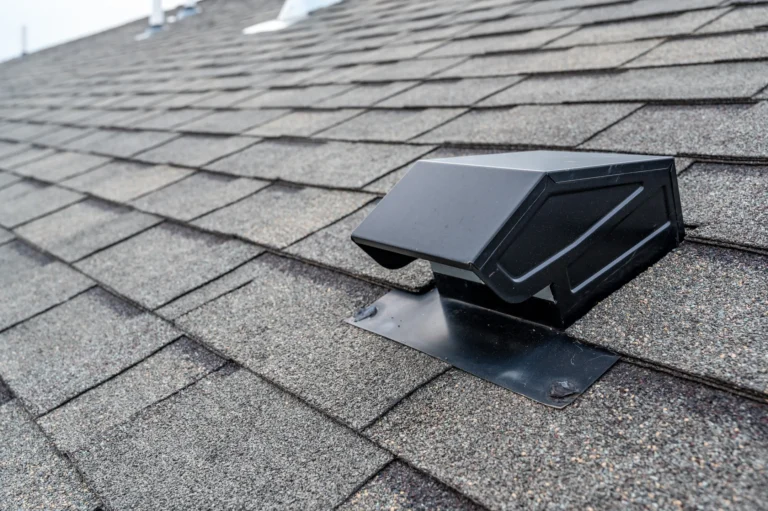
Blog
5 Reasons You Are Seeing Water Stains On Your Ceiling
Water stains on a ceiling can be an alarming sight for any homeowner. They are not just unsightly, but often indicate an underlying issue that needs to be addressed promptly.
Not sure where to start? We’ve got you covered, in this comprehensive guide, where we’ll take you through:
- What water stains on ceiling surfaces look like
- Common causes for them
- What to do when you spot one
- The cost of repairing roof leaks
- How to prevent them in the future
What Do Water Stains on Your Ceiling Look Like?

Water stains on a ceiling typically appear as discolored patches, ranging from light yellow to dark brown, depending on the severity of the leak and the duration it has been present. These stains may spread over time if the source of the water is not addressed. In addition to the discoloration, you may also notice peeling paint or bubbling plaster in the affected area.
5 Common Causes for Ceiling Water Stains
Stains on the ceiling aren’t uncommon, but they are serious business. Here are a few of the most common reasons you may have water stains on ceilings.
1) Roof Leaks:
One of the most common causes of water stains on ceilings is a leaky roof. This can occur due to damaged or missing shingles, deteriorated flashing, clogged gutters, or improper installation of roofing materials.
2) Plumbing Issues:
Leaky pipes or plumbing fixtures located above the ceiling can also lead to water stains. These leaks may occur in bathrooms, kitchens, or utility rooms.
3) Condensation:
In some cases, water stains on ceilings may be caused by condensation buildup. Poor ventilation in the attic or inadequate insulation can lead to moisture accumulation, resulting in water stains over time.
4) HVAC System Problems:
Air conditioning units or HVAC systems located in the attic can sometimes cause water stains if there is a malfunction or improper drainage.
5) Exterior Water Intrusion:
Cracks in the exterior walls or foundation of the house can allow water to enter and travel upward, leading to ceiling stains.
What to Do When You Spot a Water Stain on Your Ceiling
Upon discovering a water stain on your ceiling, it’s essential to take immediate action to prevent further damage. Here’s what you should do:
🔎 Locate the Source:
Try to determine the source of the leak by inspecting the area above the stained ceiling. Look for signs of water damage in the attic, such as wet insulation or mold growth.
🔨 Temporary Fixes:
If the leak is minor and can be temporarily patched, such as sealing a small hole in the roof or tightening a loose pipe fitting, do so to prevent further water intrusion until a professional can assess the situation.
☎️ Contact a Professional:
For more significant issues like roof leaks or plumbing problems, it’s best to enlist the help of a qualified contractor or plumber. They can accurately diagnose the problem and recommend the necessary repairs.
✋ Mitigate Damage:
Take steps to mitigate damage to your home by placing buckets or towels to catch dripping water and moving any valuable or sensitive items away from the affected area.
📸 Document the Damage:
If you have insurance coverage for water damage, document the extent of the damage with photographs or videos for your insurance claim.
Cost to Repair Roof Leaks

The cost of repairing a roof leak can vary depending on the severity of the damage, the type of roofing material, and the extent of repairs needed. On average, homeowners can expect to pay anywhere from a few hundred to several thousand dollars for roof leak repairs.
Minor repairs such as replacing missing shingles or repairing damaged flashing may cost between $200 and $500. However, if the leak has caused significant structural damage or requires a full roof replacement, the cost can exceed $10,000.
It’s essential to address roof leaks promptly to prevent further damage and avoid more costly repairs down the line. Investing in regular roof maintenance and inspections can help identify and address potential issues before they escalate into major problems.
How to Avoid Roof Leaks in the Future
Prevention is key when it comes to avoiding roof leaks and water stains on your ceiling. Here are some tips to help protect your home:
- Regular Inspections: Schedule regular inspections of your roof, attic, and ceilings to check for signs of water damage, such as stains, mold, or mildew. Inspect the exterior of your home for cracked or damaged shingles, flashing, and seals around vents and chimneys.
- Maintain Gutters and Downspouts: Clean gutters and downspouts regularly to prevent clogs and ensure proper drainage away from your home’s foundation. Consider installing gutter guards to prevent debris buildup.
- Trim Overhanging Branches: Trim back tree branches that hang over your roof to prevent damage from falling branches and reduce the accumulation of leaves and debris on your roof.
- Address Ventilation and Insulation: Ensure proper attic ventilation and insulation to prevent condensation buildup, which can lead to moisture problems and water stains on ceilings.
- Professional Roof Maintenance: Hire a professional roofing contractor for regular maintenance, including inspections, repairs, and maintenance tasks like sealing roof penetrations and resealing flashing.
By staying vigilant and addressing potential issues proactively, you can help protect your home from roof leaks and the resulting water stains on your ceiling.
Ceiling Stain? No Problem.
Water stains on your ceiling are not just cosmetic issues but indicators of underlying problems that need to be addressed promptly.Remember, when in doubt, always consult with a qualified professional for proper diagnosis and repairs.If you’re dealing with a leaking roof, Avenue Roofing is here to help! Contact us today to tackle water stains on ceiling surfaces head on!



